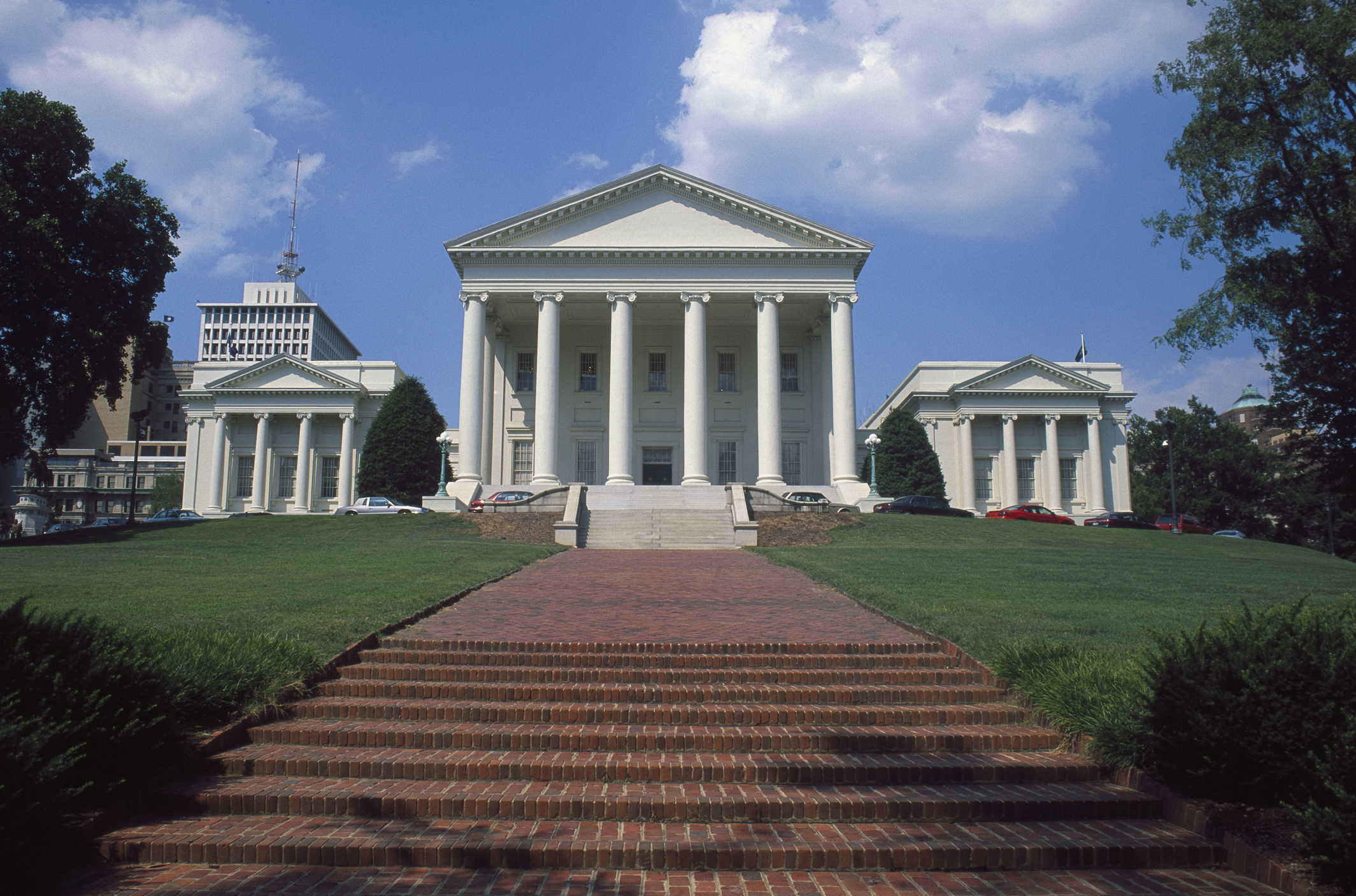
The student loan debt crisis has been a central focus of the Biden Administration, and with good reason. Americans’ collective student loan debt is second only to our outstanding mortgage debt. But as researchers and commentators have pointed out, that debt load is proportionally higher among women and Black people, adding more financial stress to the lives of folks who already have lower incomes and net worth compared with their white male peers. Because of these factors, student loan debt exacerbates inequalities in American society, including racial inequality.
While college loan debt is defined as a 21st century problem, history shows us that debt has long been used intentionally to reinforce racial, gendered, and economic hierarchies. A prime example is the jail system in pre-Civil War Richmond, Va., where limiting public funding for jails shifted the financial burden of incarceration from the state onto Black Richmonders, reducing some free members of that community to virtual enslavement.
Read More: Biden's Student Loan Forgiveness Plan Doesn't Do Enough for Black Americans
Two decades before the Civil War, Richmond was a small but growing city in the Upper South. Richmond served as a center for commerce, a transportation hub. A busy iron foundry produced the rails that built Virginia’s early railroads. Tobacco and wheat flowed in from the hinterland for processing. Tragically, Richmond was also the northern hub of the domestic slave trade, which devastated communities and destroyed families to provide the enslaved labor for the growing cotton economy of the Deep South. In this Second Middle Passage, slave traders drove coffles of enslaved people to Richmond, from which they would be sold and transported south.
Richmond’s resulting bustling economy attracted rural whites, Irish and German immigrants, and Northern merchants. Free Blacks also made their way to the city where, despite its prominence as a slave market second only to New Orleans, Richmond held out the hope of economic access, community, and some level of freedom.
One November day in 1842, Louisa Brown, a 22-year-old, mixed-race free woman, was arrested and incarcerated in Richmond for not carrying proof of her freedom. At the time, Virginia law required that free Black people like Brown always carry a county-issued pass attesting to their free status. Across the South prior to 1865, white officials, afraid that growing free Black populations would disrupt slavery and white supremacy, adopted laws like the one that ensnared Brown in 1842.
Read more: 18 Black leaders working to end the racial wealth gap
Efforts to restrict and control Black people’s movement were generally considered by white citizens to be important public service. Indeed, one scholar of the history of the Richmond police force wrote that “the community measured police success largely by how well the force could guarantee security against black rebellion.”
However, local officials were reluctant to appropriate tax money to build and maintain the public jail, which served as one of the enforcement mechanisms for pass laws. Instead, in Richmond, incarcerated Black residents were required to reimburse the jailer for all expenses incurred during their incarceration. Meanwhile white residents were neither subjected to pass laws nor auctioned for nonpayment of jail debt. Indeed, Black people were forced to literally pay for the mechanisms of white supremacy.
Similar pecuniary punishments had a long history in Virginia. As far back as 1718, Virginia law called for jailers to assume that any incarcerated person of African descent was enslaved. If the enslaver of an incarcerated person could not be identified, they would be “hired out” until their “debt” to the jail could be paid. White Virginians thereby used the institution of the public jail to tie Blackness to slavery.
Read More: The Critical Need to Teach the History of Mass Incarceration
Louisa Brown spent six months in jail, amassing the evidence needed to finally prove her free status in court. Yet upon doing so, she was not released by the Richmond city jail. She was now expected to reimburse the state for the cost of her six-month incarceration. That fee was too high for her to pay, and so Brown was auctioned by the city. Brown joined a growing group of free Black Virginians who became practically enslaved due to debt peonage.
As a debt peon, Brown was not technically enslaved, but her situation bore striking parallels to the practice. She was required under the law to spend 50 years laboring, uncompensated, for a member of Richmond’s elite. Contemporary observers stated that debt peons were subjected to the same level of violence and deprivation that enslaved people received at the hands of their enslavers.
The system was so exploitative that the Richmond Society of Friends, a group known for its anti-slavery work, spoke out publicly against the practice, arguing that it was contrary to the “beneficent principles established by the Supreme Rules of the Universe.” In response, the Virginia Legislature took steps to limit some of the worst abuses inherent in the system, although they did nothing to stop it entirely.
None other than Frederick Douglass also leveled criticism at debt peonage. In 1848 the great orator, writer, and abolitionist published an article in his newspaper, The North Star, sarcastically noting the “wisdom of Virginia law-makers” and condemning what he identified as “a glorious commentary upon the professedly free institutions of Republican America!”
Debt peonage was designed by lawmakers to obscure its clear connections to white supremacy. Purchasers of the labor of debt peons could tell themselves the “color-blind” story that any person who contracted debts should be expected to pay them, and that they were entitled under the law to the labor of people who did not pay their jail debt.
But with the distance of history, any reasonable observer today can see the systemic racism inherent in this system. No white Richmonders were auctioned at the public market because they could not pay their jail debts. Only Black Richmonders were required to reimburse the jailer for their incarceration. And most of the incarcerated individuals were there because of simply “being in the wrong place at the wrong time,” as Brown, a free woman, was.
Read More: The Perils and Promise of America's Third Reconstruction
White fear of Black freedom made it relatively easy for lawmakers to pass legislation requiring free Black people to carry passes. A complementary legal and economic system oriented toward the supremacy of property rights made it only “fair” that free people pay their debts.

Holders of student loans today might also be said to have been in the wrong place at the wrong time. While they made the free choice to borrow money, they also entered higher education at a time of soaring college costs, in part due to state legislatures’ refusal to fund higher education. In addition, new college graduates are more likely to find themselves unemployed and unable to make payments on the debt that was supposed to make it easy for them to find a job that pays well.
College debt is hurting the very people that a college education was supposed to help the most. Like Louisa Brown and free Blacks of yesteryear, today’s student loan borrowers are seeking to take advantage of America’s opportunities, yet as the debt crisis shows, many Americans, including women and Black people, still can’t get true economic freedom.
Amanda White Gibson studies the history of race and banking and is postdoctoral associate at the University of Virginia.
Made by History takes readers beyond the headlines with articles written and edited by professional historians. Learn more about Made by History at TIME here. Opinions expressed do not necessarily reflect the views of TIME editors.
More Must-Reads From TIME
- The 100 Most Influential People of 2024
- How Far Trump Would Go
- Scenes From Pro-Palestinian Encampments Across U.S. Universities
- Saving Seconds Is Better Than Hours
- Why Your Breakfast Should Start with a Vegetable
- 6 Compliments That Land Every Time
- Welcome to the Golden Age of Ryan Gosling
- Want Weekly Recs on What to Watch, Read, and More? Sign Up for Worth Your Time
Write to Amanda White Gibson / Made by History at madebyhistory@time.com
